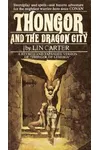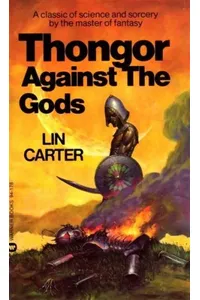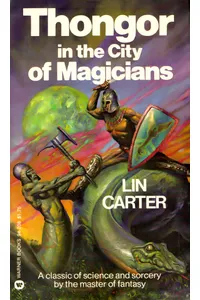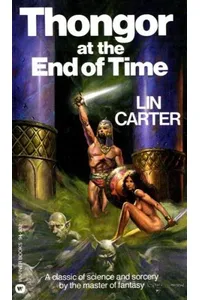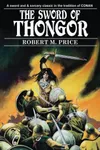Step into the untamed jungles of Lemuria, where Thongor of Valkarth, a sword-swinging barbarian with a heart of steel, battles dragon kings and dark sorcery! Lin Carter’s Thongor series is a thrilling dive into sword and sorcery, blending primal adventure, magical technology, and epic quests. Set in a prehistoric lost continent, it’s a love letter to pulp fantasy that hooks you from the first page.
With its dinosaurs, flying ships, and larger-than-life hero, Thongor delivers fast-paced escapism. If you crave action-packed tales inspired by Conan the Barbarian and John Carter of Mars, this series is your next obsession. Let’s explore the wild world of Thongor and why it still captivates fantasy fans!
How Thongor Began
In 1965, Lin Carter, a passionate fan of Robert E. Howard and Edgar Rice Burroughs, unleashed Thongor with The Wizard of Lemuria. Inspired by the pulp adventures of his youth, Carter crafted a hero who combined Conan’s raw strength with Burroughs’ swashbuckling flair. Set in the mythical Lemuria, a Pacific continent teeming with Mesozoic beasts and ancient magic, the series was Carter’s bold entry into sword and sorcery, a genre he helped revive in the 1960s.
Carter’s love for pulp shone through, but his inexperience led to a rough-around-the-edges style that fans either adore or critique. Despite this, Thongor’s vivid world and relentless action won hearts, spawning a comic series and even inspiring a rock band. Though Carter later shifted focus to editing and Conan pastiches, Thongor remains his signature creation.
The Heart of Thongor
The series kicks off with Thongor and the Wizard of Lemuria (1965, revised 1969), where Thongor, a mercenary from Valkarth’s icy north, teams with the wizard Sharajsha to forge a magic sword and thwart the dragon kings’ return. In Thongor and the Dragon City (1966, revised 1970), he faces the vampire-king Xothun to save Princess Sumia, dodging dinosaurs and man-eating plants. Thongor Against the Gods (1967) pits him against divine forces, while Thongor Fights the Pirates of Tarakus (1970) wraps his saga with a high-seas showdown.
Lemuria is the star, a vibrant clash of barbarism and advanced magic-tech, from flying airships to mystical shrines. Themes of heroism, vengeance, and unity drive Thongor’s quest to free humanity from reptilian overlords. Carter’s style leans on pulpy excess—expect improbable escapes and gaudy finery—but its charm lies in its unapologetic energy. While critics note inconsistencies, like Lemuria’s odd geography, fans revel in its colorful chaos.
The series blends sword and sorcery with sword-and-planet vibes, tossing in sci-fi elements like magnets posing as magic. It’s not deep or polished, but it’s a rollicking ride through a lost world where every page brims with danger and wonder.
Why Thongor Resonates
Thongor helped spark a sword and sorcery revival in the 1960s, paving the way for new voices in the genre. Its blend of Howard’s grit and Burroughs’ imagination made it a cult favorite, with Marvel Comics adapting it in Creatures on the Loose (1973–74). Though Carter’s focus waned, leaving the saga unfinished, fans like Robert M. Price kept it alive with pastiches like Young Thongor (2012).
Today, Thongor’s appeal lies in its nostalgic simplicity. It’s a guilty pleasure for fantasy buffs who love unpretentious adventure. Its niche status only adds to its allure—reading Thongor feels like unearthing a hidden gem from a bygone era of pulp storytelling.
- First Published: 1965 (The Wizard of Lemuria)
- Total Books: Six novels, plus short stories
- Setting: Prehistoric Lemuria, circa 492,993 B.C.
- Adaptations: Marvel Comics series (1973–74)
Dust off Thongor and the Wizard of Lemuria and plunge into a world of thunder-dragons and enchanted blades! Whether you’re a sword and sorcery veteran or a curious newbie, Thongor’s Lemuria awaits with adventure at every turn.

